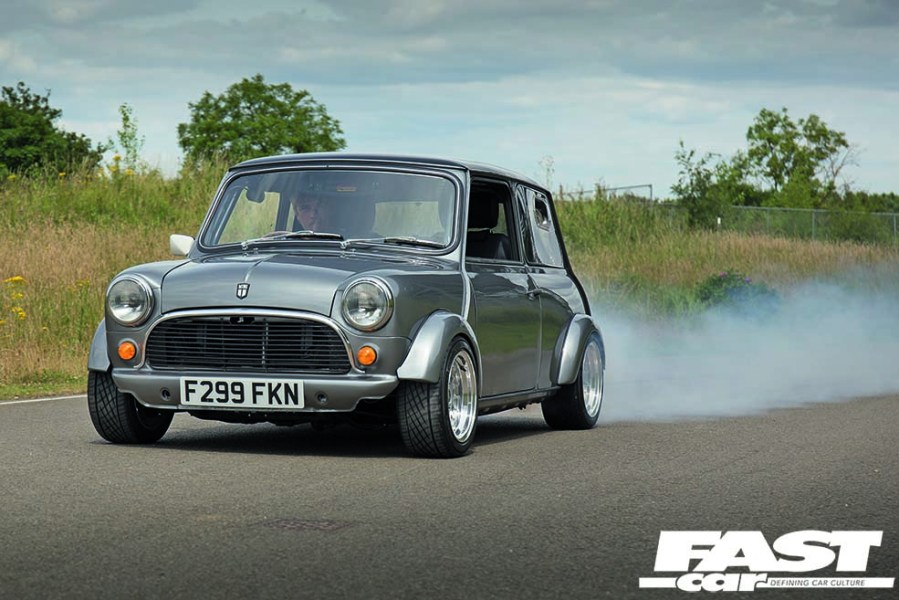We all know that Minis are more about the driving sensation rather than out and out speed. For around 60 years now, the razor-sharp steering, featherweight body and go kart cornering of the classic Mini has been a hard formula to beat, even for much more modern creations.
This visionary little motor is, and always will be about that capable little chassis, right? Well, with Jim Morris’ latest build, you need to rethink what’s physically possible in terms of balls out speed too. This rear-wheel-drive animal is up there with the lightweight Exiges and Caterhams when it comes to face-bending acceleration. This is about as close to an Ariel Atom as a Mini can get, and obviously that’s no mean feat.
Jim’s path to success hasn’t been plain sailing though. In fact, for he’s worked through an incredible list of Minis so far. “My first was when I was 16, I passed my test and with three of us on board we decided to try a bit of stunt driving, as you do,” he recalls. That obviously ended in tears, with the Mini tipped on its side and put Jim’s wild stunt man career in tatters. “I sold that one and bought a Clubman with a Suzuki Swift engine, before fitting a turbo and selling it to a guy in Belgium,” he says. Then it was on to a Pro Motive Yamaha R1 bike engine conversion. “That was hard work on the road, especially with no limited-slip diff. It was a shame because it sounded great and was quick, but not enjoyably quick, as you had to keep changing gear to keep it going.”
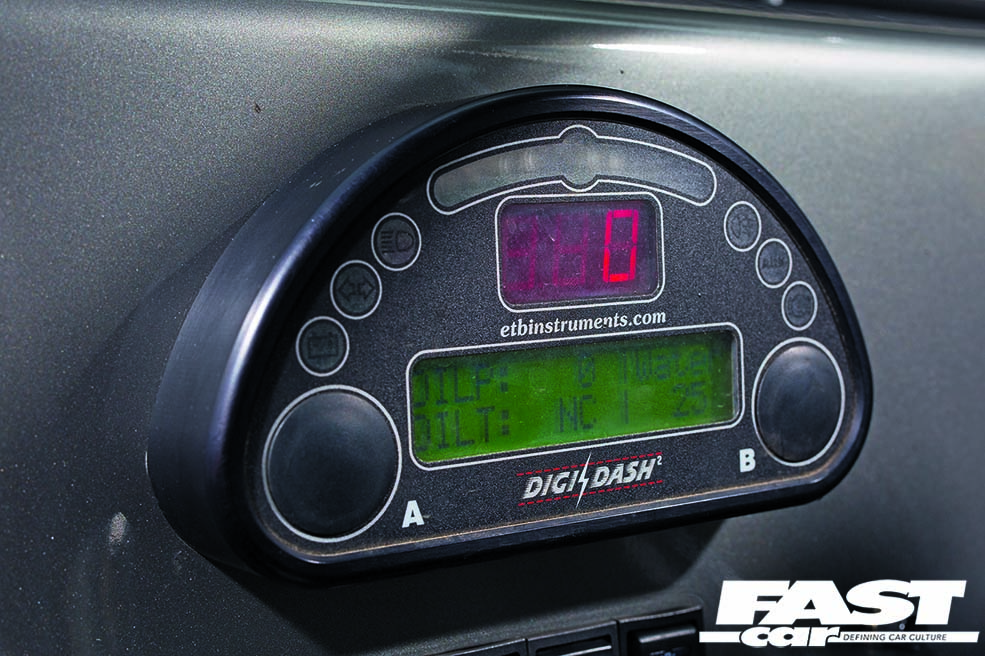
Experience from those three projects led him to a Mini Pick-up with a Watsons Rally Honda B16 engine conversion up front. The 200bhp install kept Jim amused for the best part of six months, then he bolted a supercharger kit on for, er, kicks and giggles. “I tend to let someone else spend all the big money, then finish them off how I like,” he says. “When I found this one it came with about £20,000 of receipts from Z-Cars, so for £6000 it was a cheap project really. It’d failed the MoT before I bought it, but it had been running on the road for about four years already.”
Before you ask, no – it didn’t look like it does today for that price, although the desirable Type-R VTEC engine was there. With a custom exhaust manifold and ECU remap, the engine was already pushing out around 220bhp, making for a seriously potent road car. Sadly however, the Mini had clearly been through some heavy right-footed grief in its time, and some heavy-handed DIY mods for that matter. “There was a Zeemax bodykit and I’ve never been a fan, so we took that off and started stripping it down,” says Jim. “Everything was rusty underneath where water had seeped through the joins. It was sent over to John at Coventry Minis so he could fix the bodywork; it was pretty bad.”
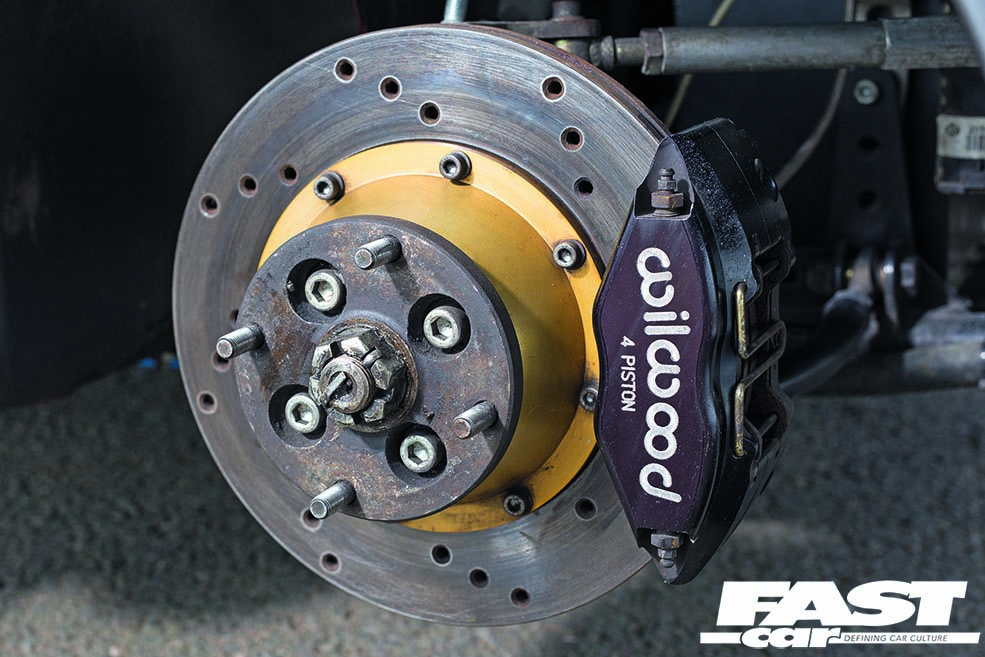
John would end up replacing the whole front end, both door skins, both rear quarters and the rear valance.
Procrastination is a dangerous pastime, as Jim discovered while waiting for the body repairs to be sorted. “John couldn’t fit the car in immediately to do the bodywork and I got a bit restless,” he recalls. “Then I was looking online and saw a Jag XJR6 supercharger set-up, all complete, and decided to go for it. In the meantime I’d worked out how to bolt it all on, and when it went off for bodywork I thought I’d get all the pipework and fixings finished and ready to go.”
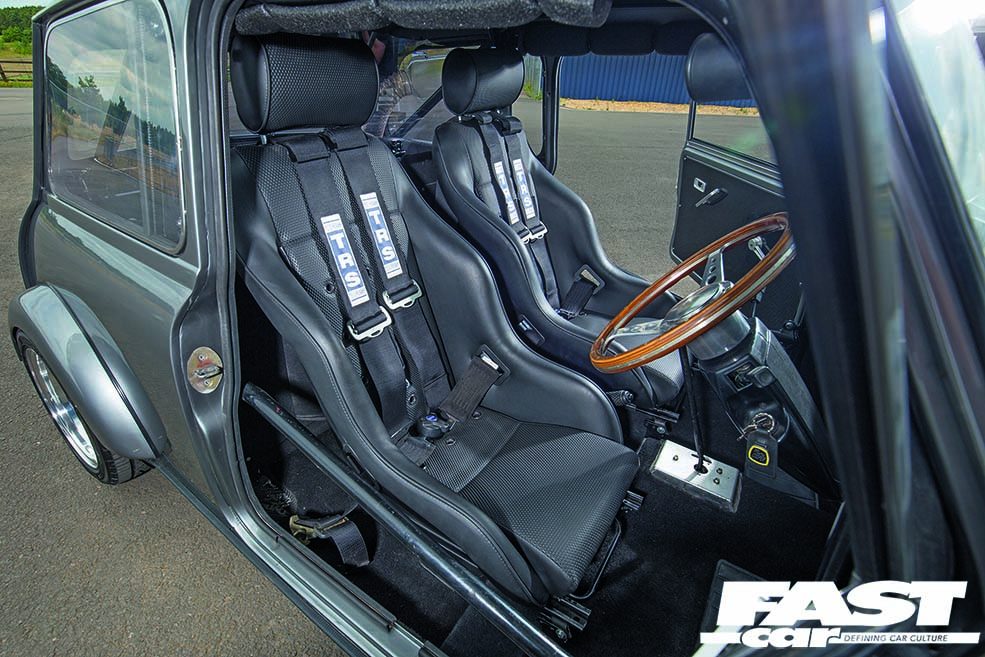
It’s not uncommon for Honda Civic owners to bolt a supercharger on, something like an Eaton M62, big brother to the MINI’s M45. 300bhp is apparently quite feasible on a supercharged two-litre VTEC, although the closer you get to the blower’s performance ceiling, the higher the temperature of pressurised air pumped into the engine. Compressing air generates much heat, and cooler denser air always creates a bigger bang, so the advantage of going for a larger M90 is that it can potentially flow more air, more efficiently. The Jag’s four-litre straight-six runs 326bhp as standard, so with those figures in mind, Jim knew it would deliver the boost pressures he needed. The factory set-up also came with a water-fed chargecooler, eliminating the issues of feeding an air-to-air intercooler in a mid-engined car.
Once the welding, respray and supercharger conversion were all complete, Jim fired off some pics of his latest completed project and prepared for the MoT the following day. “It was booked for eight in the morning, so I thought I’d toodle down there no problems and it would go straight through,” he says, unaware of the impending disaster. “So I came off a roundabout to accelerate lightly and it snapped round on me, I went up a kerb, across some wet grass where it’d rained the night before and hit a lamp post hard up the back. It had some road-legal track tyres, the road was greasy and I’d never driven a rear-wheel-drive Mini before, so it was probably the worst possible conditions for a first drive!”
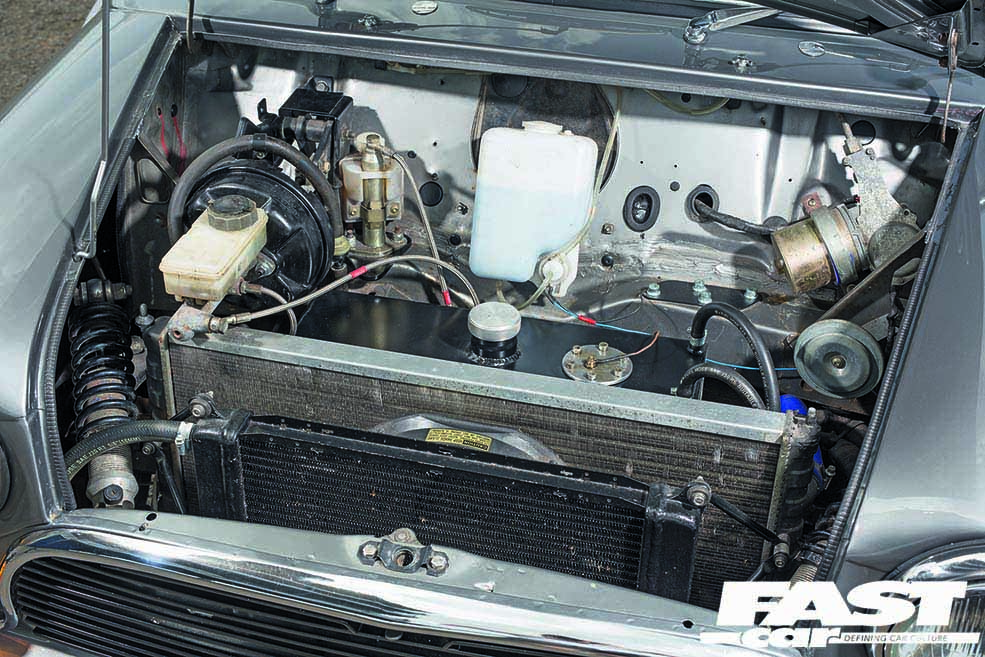
The rear end of the freshly finished Mini was completely caved-in, as there’s not a huge amount of strength in the rear body panels on – it’s all in the subframe and rollcage. “That actually made the panel repairs more straightforward as it hadn’t damaged all of the floor or twisted the shell too badly,” says Jim, who’d sent the car back to John at Coventry Minis for another go. “I was a bit too far into the project by then to give up, and with the insurance agreed, I could get a few more new bits in there too.” That included a set of new wheels, as the previous Revolution split-rims were all buckled in the crash. Jim actually took them over to Image Wheels to see about a rebuild, but came away with a set of brand new HT-style 7x13s instead, spec’d with a perfect offset to fill those wide arch extensions. The rims cover mahoosive front discs and Wilwood four-pots, yet they’re subtle enough not to detract from the styling.
This time round, Jim popped the car over to Northampton Motorsport for a proper corner weight and suspension geometry setup, as the firm twitchiness may well have contributed to the crash. The car features on-board coilovers up front, more akin to a kit car than a Mini, and setting it all up takes time and expertise. “During the crash, the fuel regulator vacuum had also come off,” he adds, “and that was causing it to run really rich all the time. So we put it back on the rollers at Advanced Motorsport and then fixed a boost leak. It was running about one bar of boost and 400bhp when the engine let go.”
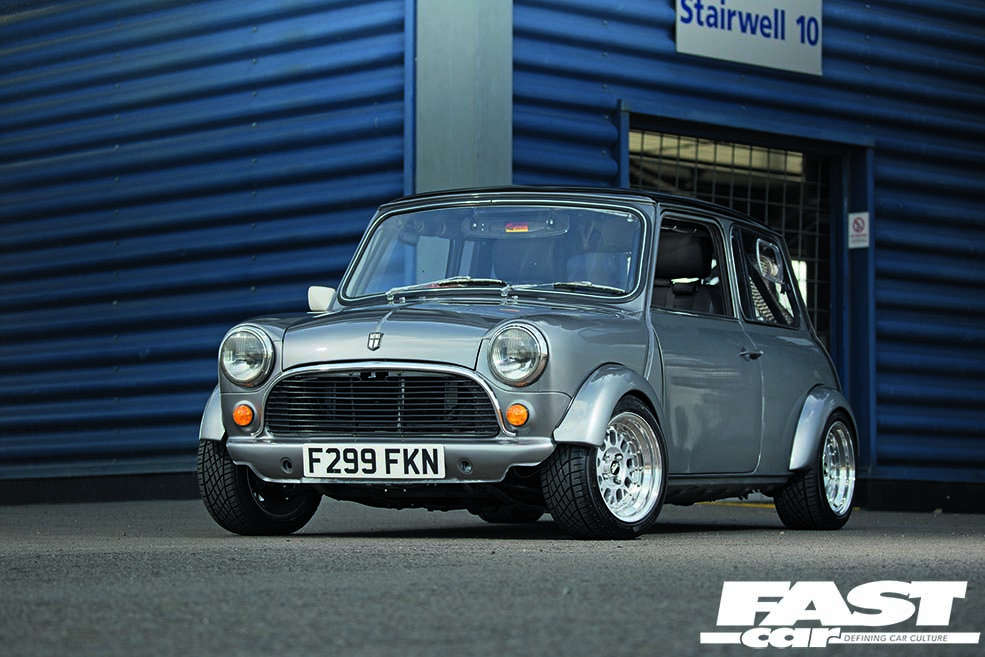
At full boost, a con-rod made a cheeky bid for freedom and blew a hole in the side of the block. “I had no history of the engine, how many miles it’d done or any of the servicing,” says Jim. “You couldn’t even check the oil level without removing the bulkhead originally, the way it had been fitted, so who knows what may have happened to the engine over the years.”
Honda engines are said to be bullet proof, but at double the factory output and with an Eaton M90 doing its thing, we wouldn’t be rushing to fill out the warranty form. The replacement engine came from a guy who’d planned a similar Mini build and not finished it, so Jim did well for the £650 asking price. “It came on a pallet complete with the ‘box and wiring, apparently from a 60,000-mile Civic,” he continues. “We checked all the shells, changed the cam chain and gave it a general once-over. It was also a good chance to fit a Quaife LSD, then a larger supercharger pulley to reduce the boost and try to avoid blowing it up again.”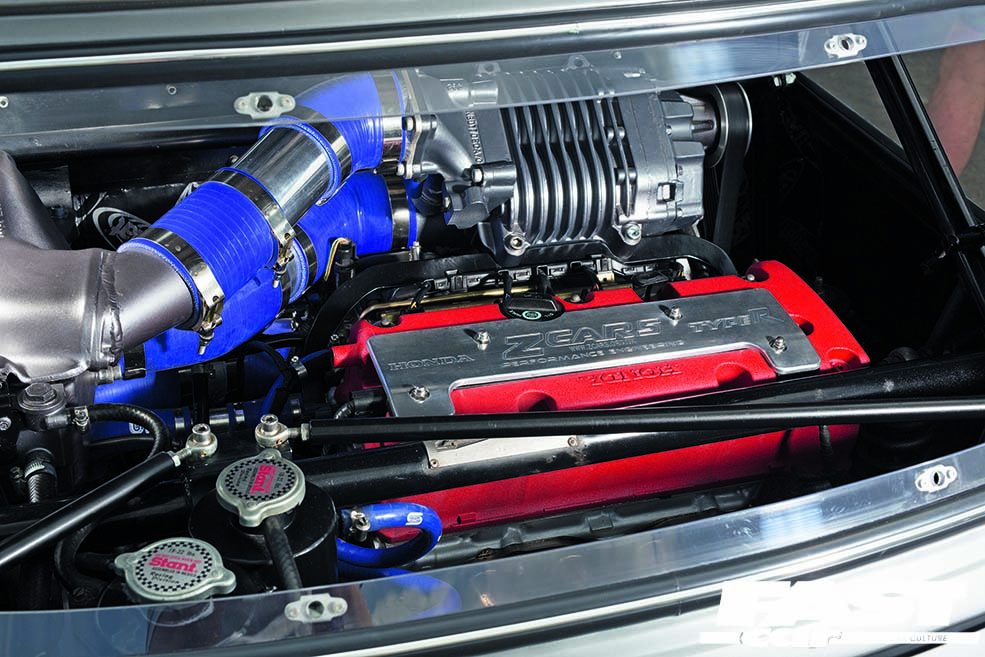
Now taken back a notch in boost and re-mapped by Josh at Advanced Motorsport, it’ll light up both rear tyres with 312bhp, or around 350bhp at the flywheel. It’ll also do that with the first two gears locked off – it’s now effectively a four-speed Mini again, as first and second are too low when used with 13-inch wheels. All-up weight is just 720kgs, so you’ll looking at around 480bhp per tonne, which is downright silly. Thankfully Jim’s got this beastie under control now: “It handles well, although you need to be aware of the power when you floor it coming out of corners.”
Recent finishing touches include a pair of Cobra RSR bucket seats, and a cool two-piece rear window from Plastics 4 Performance, with a frame around the edge in 5mm Perspex and a 3mm centre. “They’d not done one before like that but I’m sure they will now people have seen it,” says Jim. “It gives you full access to the engine from the back, and whereas some people bolt them around the frame, I think it looks better finished with the rubber seal.”
So, what’s next? Sell this and build another? “No I’ve become quite attached to this one now I’ve rebuilt it twice!” he jokes. Somehow, we’re not at all surprised!
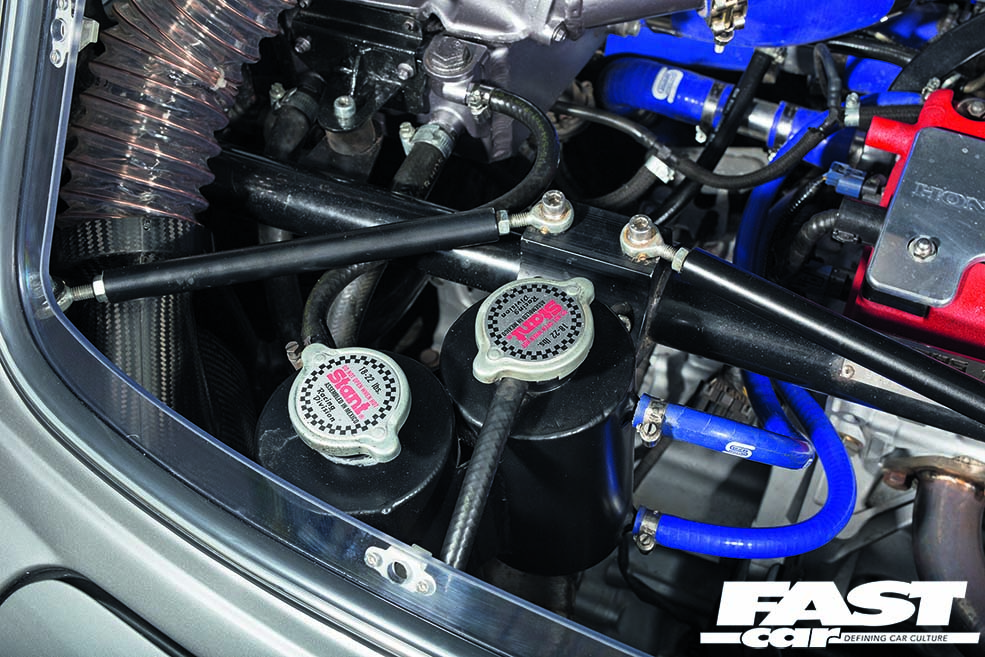
Tech spec:
Engine
K20A2 Honda VTEC from EP3 Civic Type-R, 1998cc, double overhead cam, Eaton M90 supercharger from Jaguar XJR, running 0.7 bar boost pressure, modified Jaguar XJR chargecooler, Simpson stainless steel exhaust manifold, ITB carbon-fibre intake, Tial 50mm bypass valve, DTA S80 ECU, Honda Civic Type-R six-speed gearbox (1st and 2nd blanked off), Quaife LSD, Stage 2 competition clutch.
Chassis
7×13-inch Image wheels, Yokohama 175/50×13 A539 tyres, Wilwood big brake kit (front), Ford Sierra calipers and Mazda MX5 discs (rear), servo-assisted, stainless steel braided lines.
Exterior
Fully rebuilt (twice) with new front end, door skins, rear quarter panels and rear valance. Heated front windscreen, Polycarbonate side windows, two-piece rear screen, Z-Cars arch extensions, minimal chromework, standard black grille, Rover Stone Grey metallic and
black respray.
Interior
Fibreglass dashboard, Digidash display, Cobra RSR eyelet bucket seats, four-point TRS harnesses, vertical bulkhead and smoked Lexan glass, carbon-fibre door cards, wood-rim steering wheel, DSN Classics billet alloy handles and throttle pedal.

